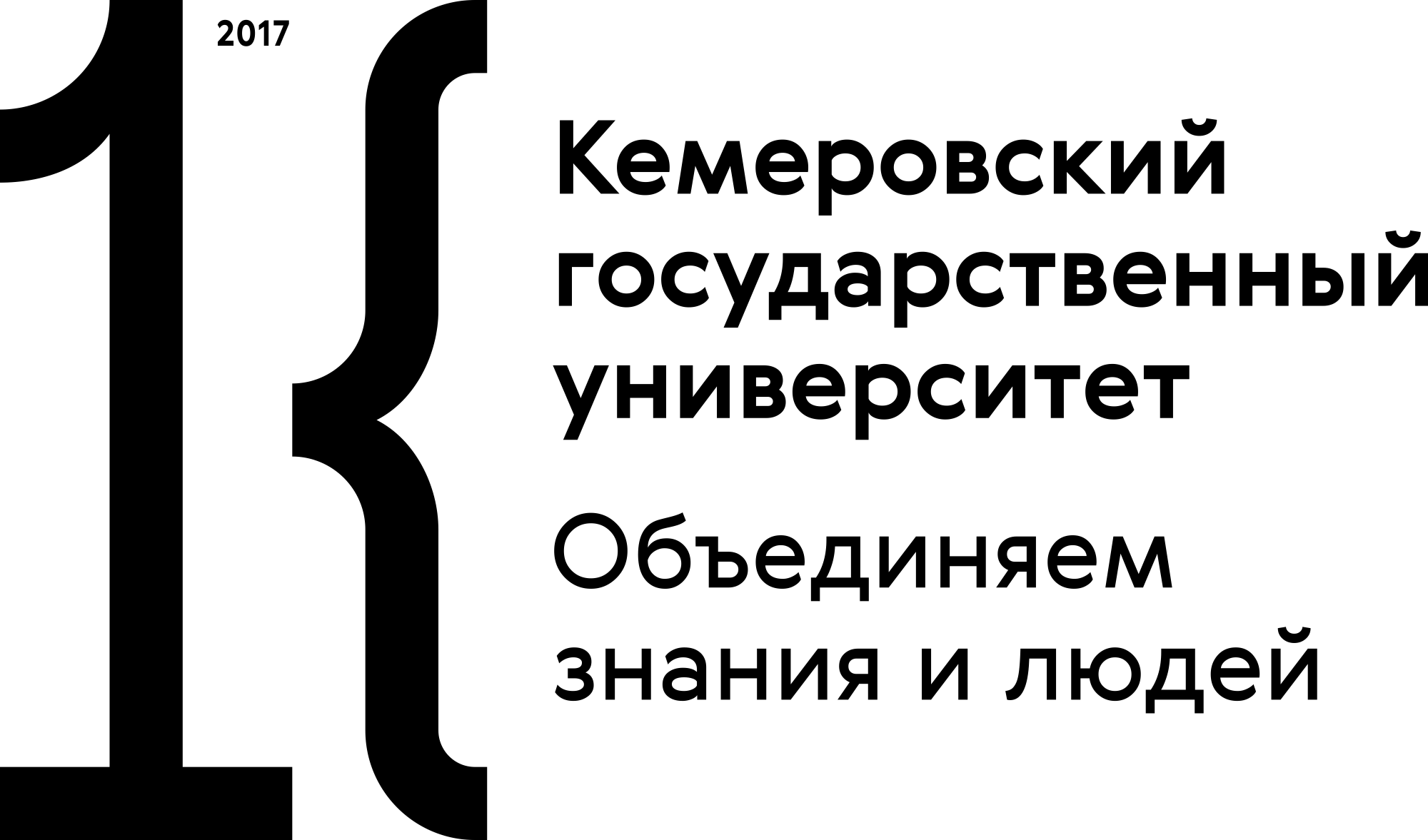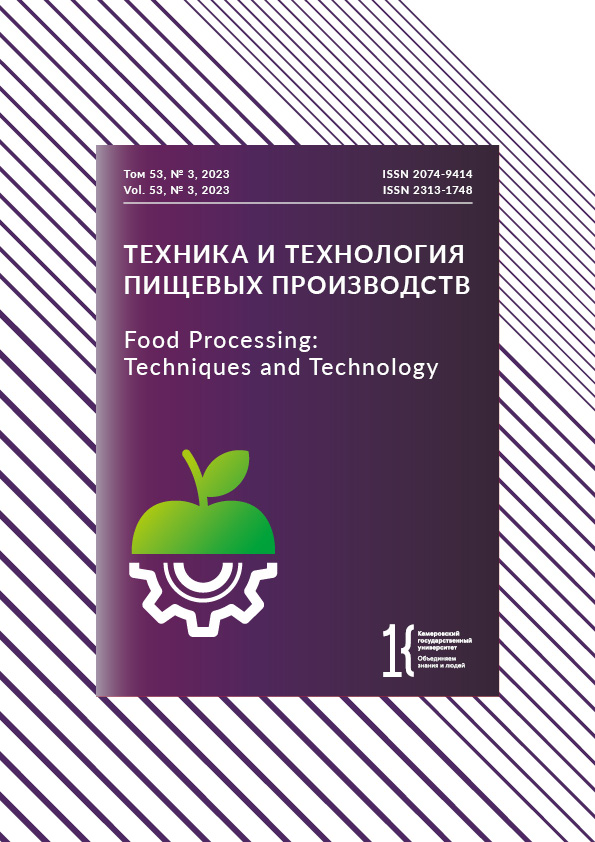Kemerovo, Russian Federation
Kemerovo, Russian Federation
Kemerovo, Russian Federation
Kemerovo, Russian Federation
Kemerovo, Russian Federation
Sous vide technology came to Russia in the early 2000s. Its quality standards require a multidimensional comprehensive study to develop theoretical and methodological foundations. The research featured the effect of various Sous vide modes on beef quality based on histological analysis and sensory assessment. The review of best practices in this sphere included publications registered in Scopus, Web of Science, and eLIBRARY.RU. Beef from sacral part underwent Sous vide processing at two modes, i.e., 57 and 64°C for 24 h and 80°C for 12 h. The samples obtained were subjected to histological analysis and sensory assessment. The histology showed that the cooking process at 100°C and the Sous vide modes at 57, 64, and 80°C increased the intercellular space and dissolved the connective tissue. Higher temperature modes led to more pronounced shrinking and deformation of muscle fibers. Under the Sous vide conditions, fibrous structures demonstrated the most severe destruction after 12 h at 80°C. As the destruction of muscle fibers increased, more nuclei entered intercellular space. Moreover, perimysium and sarcolemma demonstrated signs of granulation between muscle fiber bundles. The Sous vide samples received the best score for juiciness and tenderness. The research revealed a certain contradiction between the growing degree of fibrous destruction caused by thermal treatment and the improving consistency index for juiciness and tenderness. The authors consider it necessary to investigate the matter further and invite specialists to submit their ideas.
Sous vide technology, beef meat, quality, review, histology, modes, micr ostructure, organoleptic properties
1. Meat market: statistics updated for the third quarter of 2022 [Internet]. [cited 2023 Sep 12]. Available from: https://ab-centre.ru/news/rynok-myasa-statistika-s-obnovleniem-na-iii-kvartal-2022-goda
2. Consumers have reconsidered their diet: how customer preferences changed last year [Internet] [cited 2023 Sep 12]. Available from: https://www.agroinvestor.ru/markets/article/39533-potrebiteli-peresmotreli-ratsion-kak-v-proshlom-godu-menyalis-predpochteniya-pokupateley
3. Gurinovich GV, Khrenov VA, Patrakova IS. Comparative evaluation of beef quality depending on the aging conditions. Polzunovskiy Vestnik. 2022;(1):73–78. (In Russ.). https://doi.org/10.25712/ASTU.2072-8921.2022.01.010; https://www.elibrary.ru/JJBYWC
4. Lisitsyn AB, Kozyrev IV, Mittel’shteyn TM. Production and evaluation of high-quality beef. Vsyo o Myase. 2015;(3):22–25. (In Russ.). https://www.elibrary.ru/TYWJUZ
5. Gorlov IF, Slozhenkina MI, Lisitsyn AB, Bolaev BK, Natyrov AK, Mosolova DA. Modern approaches to increasing the efficiency of genetic potential of Kalmyk cattle. Volgograd: Sfera LLC; 2019. 260 p. (In Russ.). https://www.elibrary.ru/UYEHVK
6. Gurinovich GV, Khrenov VA, Patrakova IS, Patshina MV. Studying an effect of thermal treatment methods on physico-chemical properties of beef depending on aging technology. Food Systems. 2022;5(4):376–382. (In Russ.). https://doi.org/10.21323/2618-9771-2022-5-4-376-382; https://www.elibrary.ru/OMZMET
7. Cheremenina NA, Zhiryakov ED, Mikhailov MS. Comparative characteristics of raw and thermally treated meat of different animal species and poultry. Proceedings of the international scientific and practical conference on Integration of science and practice for agro-industrial development; 2018; Tyumen. Tyumen: Northern Trans-Ural State Agricultural University; 2018. p. 166–171. (In Russ.). https://www.elibrary.ru/VPOPLP
8. Robbins K, Jensen J, Ryan KJ, Homco-Ryan C, McKeith FK, Brewer MS. Consumer attitudes towards beef and acceptability of enhanced beef. Meat Science. 2003;(65):721–729. https://doi.org/10.1016/S0309-1740(02)00274-7
9. Saha A, Perumalla AVS, Lee Y, Meullenet JF, Owens CM. Tenderness, moistness, and flavor of pre- and postrigor marinated broiler breast fillets evaluated by consumer sensory panel. Poultry Science. 2009;88(6):1250–1256. https://doi.org/10.3382/ps.2008-00236
10. Nishinari K, Peyron M-A, Yang N, Gao Z, Zhang K, Fang Y, et al. The role of texture in the palatability and food oral processing. Food Hydrocolloids. 2024;147:109095. https://doi.org/10.1016/j.foodhyd.2023.109095
11. Drey LN, O'Quinn TG. Tenderness, juiciness and flavor contribute to the overall consumer beef eating experience. Kansas Agricultural Experiment Station Research Reports. 2017;3(1):27. https://doi.org/10.4148/2378-5977.1361
12. O’Sullivan MG, Cruz-Romero MC, Kerry JP. Sensory and physiochemical comparison of traditional bone-in dry-aged beef loin with bone-less dry ageing and ageing using a moisture permeable bag. Food and Nutrition Sciences. 2018;9(9):1078–1098. https://doi.org/10.4236/fns.2018.99079
13. Felderhoff C, Lyford C, Malaga J, Polkinghorne R, Brooks C, Garmyn A, et al. Beef quality preferences: Factors driving consumer satisfaction. Foods. 2020;9(3):289. https://doi.org/10.3390/foods9030289
14. Garmyn A. Consumer preferences and acceptance of meat products. Foods. 2020;9(6):708. https://doi.org/10.3390/foods9060708
15. Sokolov AYu, Shishkina DI, Pchelkina VA. Development of meat products with wheat fiber for food industry. Herald of Ryazan State Agrotechnological University named after P.A. Kostychev. 2018;(4):172–178. (In Russ.). https://www.elibrary.ru/LCIETW
16. Lazarev AA, Kuznetsova TG. National and foreign approaches in descriptionand assessment of consistency and texture of meat products. Vsyo o Myase. 2019;(5):19–23. (In Russ.). https://www.elibrary.ru/RSKRBK
17. Lisitsyn AB, Susʹ IV, Mittelʹshteyn TM, Legoshin GP, Mogilenets ON, Afanasʹeva ES. Principles of classification and quality assessment in the new unified national standard on Cattle for slaughter; beef and veal in carcasses, half-carcasses and quarters. Vsyo o Myase. 2010;(3):39–43. (In Russ.). https://www.elibrary.ru/MRYEPR
18. Gurinovich GV, Patrakova IS, Khrenov VA, Patshina MV, Shevchenko AI. Effect of dry aging on beef muscle proteins. Food Processing: Techniques and Technology. 2023;53(3):621–629. (In Russ.). https://doi.org/10.21603/2074-9414-2023-3-2462
19. Breeding beef cows: features and prospects [Internet]. [cited 2023 Sep 20].
20. Amerkhanov KhA, Fedorenko VF, Strekozov NI. Breeds of pedigree farm animals and poultry: distribution in the Russian Federation. Catalog. Moscow: FGNU “Rosinformagrotekh”; 2006. 60 p. (In Russ.). https://www.elibrary.ru/WFONSH
21. Inerbayev BO, Khramtsova IA. Meat breeds of cattle in the Siberian Federal District. Development strategy for beef cattle breeding and feed production in Siberia: conference proceedings; 2013; Tyumen. Tyumen: Pechatnik; 2013. p. 28–33. (In Russ.).
22. Gorlov IF, Kaydulina AA, Kolomeytseva AS, Komarova ZB. Innovative technologies for marbled beef from various cattle breeds. Proceedings of Lower Volga Agro-University Complex: Science and Higher Education. 2012;(1):68–71. (In Russ.). https://www.elibrary.ru/OWIDTD
23. Kaydulina AA, Randelin AV. Histological studies of the marble beef obtained from Kazakh white-headed bulls at different periods of slaughter. New approaches, principles, and efficiency mechanisms for production and processing of agricultural products: Proceedings of the International Scientific and Practical Conference; 2014; Volgograd. Volgograd: Volga Region Research Institute of Manufacture and Processing of Meat-and-Milk Production; 2014. p. 55–57. (In Russ.). https://www.elibrary.ru/VXXTFN
24. Santos D, Monteiro MJ, Voss H-P, Komora N, Teixeira P, Pintado M. The most important attributes of beef sensory quality and production variables that can affect it: A review. Livestock Science. 2021;250:104573. https://doi.org/10.1016/j.livsci.2021.104573
25. Androsova AN, Golovko EN, Zabashta NN, Sinelshchikova IA. Effect of the gender status of young cattle on meat productivity and suitability of beef for baby food. Collection of Scientific Papers of KRCAHVM. 2020;9(1):315–321. (In Russ.). https://doi.org/10.34617/41jg-qm96; https://www.elibrary.ru/WACFVH
26. Cheong J-K, Oh Y-T, Lee C-H, Kim K-H, Choy H-N, Kim H-C, et al. Effects of geographic locations and year-seasons of birth on ultrasound scanned measures and carcass traits of hanwoo steers. Journal of Animal Science and Technology. 2012;54(4):247–253. (In Korean). https://doi.org/10.5187/JAST.2012.54.4.247
27. Terjung N, Witte F, Heinz V. The dry aged beef paradox: Why dry aging is sometimes not better than wet aging. Meat Science. 2021;172:108355. https://doi.org/10.1016/j.meatsci.2020.108355
28. Zhukov RB. Changes in the properties of meat during ripening. Innovative developments and their implementation: problems and prospects: Collection of articles of the International Scientific and Practical Conference. Part 1; 2021; Chelyabinsk. Ufa: OMEGA SCIENCE LLC; 2021. p. 180–184. (In Russ.). https://www.elibrary.ru/EABHBW
29. Korotkaya EV, Sakhabutdinova GF, Vasiliev KI. The study of freezing methods influence on the meat semi-finished products quality indicators. Bulletin of KSAU. 2021;(10):173–178. (In Russ.). https://doi.org/10.36718/1819-4036-2021-10-173-178; https://www.elibrary.ru/BGGDSH
30. Korotkiy IA, Korotkaya EV, Raschepkin AN, Sakhabutdinova GF. Frozen meat-containing semi-finished minced products: Biopolymer packaging materials. Food Processing: Techniques and Technology. 2021;51(1):6–16. (In Russ.). https://doi.org/10.21603/2074-9414-2021-1-6-16; https://www.elibrary.ru/JKPSED
31. Korotkiy IA, Rasshchepkin AN, Korotkaya EV, Sakhabutdinova GF. Improved freezing technology of minced meat products in biopolymer packaging material. ARPN Journal of Engineering and Applied Sciences. 2020;15(21):2547–2554. https://www.elibrary.ru/PWKWFZ
32. Setyabrata D, Tuell JR, Kim B. The effect of aging/freezing sequence and freezing rate on quality attributes of beef loins (M. longissimus lumborum). Meat and Muscle Biology. 2019;3(1):488–499. https://doi.org/10.22175/mmb.11234
33. Rodionova NS, Popov ES. Sous-vide process small-sized semi-finished beef: modes and quality indicator. Food Industry. 2015;(10):32–34. (In Russ.). https://www.elibrary.ru/ULVWRX
34. Khvylya SI. Histological method of estimation of impact of freezing and storage on meat microstructure. Kholodilnaya Tekhnika. 2016;(11):44–47. (In Russ.). https://www.elibrary.ru/ZQODAL
35. Tsaregorodtseva EV. Effect of heat treatment method on the quality of finished meat products. Current Issues of Improving the Technology of Agricultural Production and Processing. 2021;(23):234–237. (In Russ.). https://www.elibrary.ru/IONVNA
36. Koksharov AA, Mayurnikova LA, Grigor'eva RZ, Petkovich AI, Krapiva TV. Identification and studying the factors forming quality of meat semi-finished products with use of sous vide technology. AIP Conference Proceedings. 2021;2419(1):040001. https://doi.org/10.1063/5.0069972
37. Tunieva EK, Motovilina AA, Mileenkova EV. Several aspects of quality and safety formation in sous-vide products. Vsyo o Myase. 2023;(4):18–21. (In Russ.). https://doi.org/10.21323/2071-2499-2023-4-18-21
38. Anne D, Thierry A, Keisuke S, Michiyo M. Transformation of highly marbled meats under various cooking processes. Meat Science. 2022;189:108810. https://doi.org/10.1016/j.meatsci.2022.108810
39. García-Segovia P, Andrés-Bello A, Martínez-Monzó J. Effect of cooking method on mechanical properties, color and structure of beef muscle (M. pectoralis). Journal of Food Engineering. 2007;80(3):813–821. https://doi.org/10.1016/j.jfoodeng.2006.07.010
40. Supaphon P, Kerdpiboon S, Vénien A, Loison O, Sicard J, Rouel J, et al. Structural changes in local Thai beef during Sous vide cooking. Meat Science. 2021;175:108442. https://doi.org/10.1016/j.meatsci.2021.108442
41. Palka K, Daun H. Changes in texture, cooking losses, and myofibrillar structure of bovine M. semitendinosus during heating. Meat Science. 1999;51(3):237–243. https://doi.org/10.1016/S0309-1740(98)00119-3
42. Chian FM, Kaur L, Astruc T, Vénien A, Stübler A-S, Aganovic K, et al. Shockwave processing of beef brisket in conjunction with sous vide cooking: Effects on protein structural characteristics and muscle microstructure. Food Chemistry. 2021;343:128500. https://doi.org/10.1016/j.foodchem.2020.128500
43. Chotigavin N, Kerr WL, Klaypradit W, Kerdpiboon S. Novel sous-vide pressure technique affecting properties of local beef muscle. LWT. 2023;175:114439. https://doi.org/10.1016/j.lwt.2023.114439
44. Naqvi ZB, Campbell MA, Latif S, Thomson PC, Astruc T, Friend MA, et al. The effect of extended refrigerated storage on the physicochemical, structural, and microbial quality of sous vide cooked biceps femoris treated with ginger powder (zingibain). Meat Science. 2022;186:108729. https://doi.org/10.1016/j.meatsci.2021.108729
45. Yushina YuK, Vostrikova NL, Stanovova IA. Content of residual acid phosphatase activity in liver sausages and offal pates. Vsyo o Myase. 2010;(3):36–37. (In Russ.). https://www.elibrary.ru/MRYEPH
46. Antipova LV, Slobodyanik VS, Suleymanov SM. Anatomy and histology of farm animals. Moscow: KolosS; 2005. 382 p. (In Russ.). https://www.elibrary.ru/QKXFQT
47. Sultana K, Jayathilakan K, Sajeevkumar VA. Chemistry of animal tissues. In: Chauhan OP, editor. Advances in food chemistry. Singapore: Springer; 2022. pp. 385–437. https://doi.org/10.1007/978-981-19-4796-4_11











